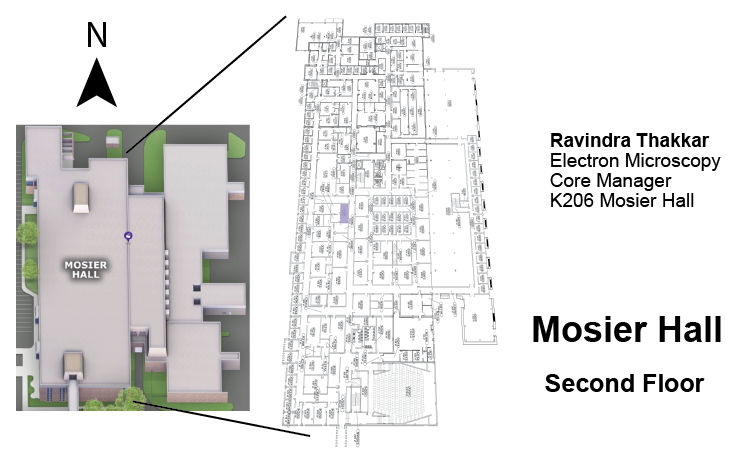Electron Microscopy Facility
The Nanotechnology Innovation Center of Kansas State (NICKS) hosts an electron microscopy (EM) facility located within the College of Veterinary Medicine on Denison Avenue. This facility can be used to help improve the scientific output of Kansas State University researchers, while providing faculty, students and staff with guidance for EM research. The facility can conduct both transmission electron microscopy (TEM) and a scanning electron microscopy (SEM).
“Our new EM facility has all the necessary equipment for proper sample fixation, processing, sectioning and visualization for TEM and SEM,” said Dr. Nancy Monteiro-Riviere, university distinguished professor and director of NICKS. “The EM facility also offers analysis for a variety of samples from biological tissues, body fluid, bacteria, viruses and samples from other scientific fields. Applications include cell biology, structural biology, soft matter and nanomaterials, nanoparticles and other fields of nanotechnology where one requires nano level imaging.” Specific technical expertise is listed below:
Dr. Monteiro-Riviere noted that the EM microscopy facility has the capability for cryo electron microscopy studies. The EM microscopy facility is scheduled to have the capability for cryo electron microscopy studies. “The TEM is cryo-compatible and equipped with a low-dose mode for beam-sensitive vitrified sample observation at liquid nitrogen temperatures,” she said. “We still need a few more additional attachments before we can offer full cryo capabilities. If faculty are interested in using cryo for their research, please let us know so we can outfit the scope with the proper cryo attachments.” NICKS offers consultation services concerning technical methods, budgeting, SOP preparation and equipment selection. Please contact the EM manager Ravi Thakkar, ravithakkar@vet.k-state.edu |

